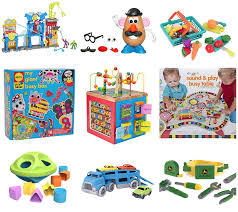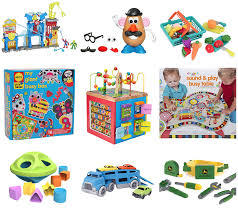Activities for the Development of Visual Motor Skills in Young Children




VISUAL MOTOR integration is a complex skill set which encompasses many underlying skills such as visual perception, motor control, and eye-hand coordination. Simply stated, it refers to the ability to translate a visual image, or a visual plan, into an accurate motor action. Visual motor skill development begins at birth and continues to be refined throughout life by practice and exposure to developmentally appropriate activities. Building with blocks, scribbling, tracing, writing, drawing, cutting and catching a ball are all examples of visual motor activities that a child engages in.
I recommend at least 15 to 30 fun minutes of visual motor activities daily to improve eye-hand coordination and build important prewriting foundations in children ages 2 to 6 years.
 PREWRITING ACTIVITIES
PREWRITING ACTIVITIES
Handwriting, for most adults, is a kinesthetic activity which can be done with eyes closed. This is because we “know” the movement pattern of each letter and can perform the task of writing without needing to think about or look at each letter formation.
Children require repeated exposure and practice with the following tactile and visually guided activities to lay the foundation for long-lasting kinesthetic patterns of movement.
These fun activities can be done starting at about 2½ years of age. Presenting these activities on a vertical surface such as a floor easel, a wall or a refrigerator will promote eye-hand coordination and build strength and stability in the arm and hand muscles.
- Allow the child time to explore and just indulge in scribbling. Gradually introduce these activities to begin shaping their strokes.
- Attach a large piece of drawing paper to the wall or refrigerator. Make a long vertical line. Have the child trace over your line using preschool crayons or markers and going from the top to the bottom 10 times. Then have the child draw the line next to yours, 10 times.
- Practice drawing horizontal lines from the left to the right in a similar way. Also practice drawing circles, starting at the top of the paper.
- Practice these prewriting strokes in a variety of media such as writing with a finger in a tray of wet sand, shaving cream, finger-paint, playdoh or salt. They can also be done using driveway chalk on paved surfaces. Gluing on beads or dry pasta on the lines/circle also reinforces the concept.
- Be creative, draw different scenes and have the child draw vertical, horizontal and circular lines to “drive the car into the garage” or “take the dog for a walk” or “push the shopping cart in the store”. You can create a narrow path outlined with colored glue and have the child trace between the “bumpy lines”.
- Between the ages of 3½ and 4 years introduce shapes such as a square and the uppercase letters of the child’s name. Be sure to use a variety of tactile media and tracing to teach formations instead of using paper and pencils.
- Trace around stencils of different shapes and figures. The non-dominant hand should hold the stencil flat and stable against the paper, while the dominant hand pushes the crayon firmly against the edge of the stencil.
- Have the child draw the letter or shape on your back and you guess it, with your eyes closed. Switch and allow the child to guess. This builds kinesthetic recognition of the letter shape. You can also play the same game with using an index finger to write invisible letters and shapes in the air.
- Using commercially available waxed strings known as “Wikki Stix”, have the child “build” letters and shapes, At first, the child can position these flexible strings over the lines of the letter or shape drawn by you. Then as they learn the formation, they can try to build their own letter or shape without using a “template”.
- Letters and shapes can also be built by rolling out pieces of playdoh or modeling clay, using popsicle sticks, and pipe cleaners.
- Once the child is in kindergarten, use all the tactile media described above to teach upper and lower case letter formations and numbers. “Learning Without Tears” (Formerly known as Handwriting Without Tears) is a multisensory handwriting curriculum used in the Shrewsbury Public Schools. More information about it is available on http://www.lwtears.com
 OCULOMOTOR CONTROL
OCULOMOTOR CONTROL
This refers to the ability of the eyes to work together to follow and hold an object in the line of vision as needed. The following activities will help in developing visual tracking and scanning skills as well as facilitate eye-hand coordination.
- Flashlight tag: Lie on your back with your child. Shine your flashlight on the ceiling, moving it horizontally, vertically, diagonally and in circular patterns. Have your child “chase” your light beam with his own flashlight.
- Balloon toss: Toss a medium sized balloon in the air. Take turns with your child to bat it with either a baseball bat or hands, trying to prevent the balloon from hitting the ground.
- Pop bubbles: Take turns to blow bubbles from a bubble wand into the air. Have the child try to pop the bubbles with his hand, keeping score of the number of bubbles successfully popped.
- I spy: Find hidden pictures in “Where is Waldo” or “I Spy” books. You can also play “I spy” games in any environment (dinner table, in the car, in the supermarket) by having your child find an object you call out, within an allotted amount of time. This will encourage visual scanning.
- Beanbag toss: Throw beanbags or koosh balls into a hula-hoop placed flat on the floor. Gradually increase the distance. To make it more challenging, place an empty soda bottle in the center of the hoop and try to knock it down.
- Throw and catch: Start with a large playground sized ball (8-inches diameter) at a distance of 3 feet. Gradually increase the distance between you and your child, and then move on to using a smaller ball.
- Mazes: For the preschool-aged child, use commercially available simple maze books that encourage tracing between vertical and horizontal lines. As the child gets ready to enter kindergarten, increase the challenge by giving him mazes with more complex shapes.
- Building blocks: Construction toys that have simple block patterns on a card that the child can copy encourage motor planning and eye-hand coordination as well as develop spatial skills. For younger children, you build the model first and then they can copy your model. For older children, have them copy the design from a card, teaching them how to do it step-by-step.
- Parquetry blocks/interlocking jigsaw puzzles: These are commercially available and encourage spatial planning and eye-hand coordination. For younger children begin with simple, wooden inset puzzles where the child has to match the piece to the shape on the board. Interlocking puzzles can be introduced around the age of 3 1/2 to 4 years, gradually increasing the number of pieces.
- Website link: This website provides a list of fun eye exercises designed to improve visual processing and explains the critical link between visual skills and school performance. These eye exercises are not meant to replace vision therapy, which is a medical treatment prescribed by developmental optometrists. http://www.eyecanlearn.com


 TOYS & GAMES http://www.otawatertown.com/toy-lists/ Play is an integral component of childhood learning. Toys and games which encourage self-exploration, creativity, and interactive play can be useful tools to address skill acquisition in all areas of development. This link will provide you with suggestions for items available in toy stores or online through catalogs. They are listed by skill areas, such as eye-hand coordination, problem solving, perceptual motor, fine motor, writing, sensory processing, etc. Approximate age ranges have also been given to help guide you according to your child’s developmental level and interests. Please consult with your child’s occupational therapist should you need help in deciding which toys or games would be appropriate for your child.
TOYS & GAMES http://www.otawatertown.com/toy-lists/ Play is an integral component of childhood learning. Toys and games which encourage self-exploration, creativity, and interactive play can be useful tools to address skill acquisition in all areas of development. This link will provide you with suggestions for items available in toy stores or online through catalogs. They are listed by skill areas, such as eye-hand coordination, problem solving, perceptual motor, fine motor, writing, sensory processing, etc. Approximate age ranges have also been given to help guide you according to your child’s developmental level and interests. Please consult with your child’s occupational therapist should you need help in deciding which toys or games would be appropriate for your child.
This site provides information using PDF, visit this link to download the Adobe Acrobat Reader DC software.
